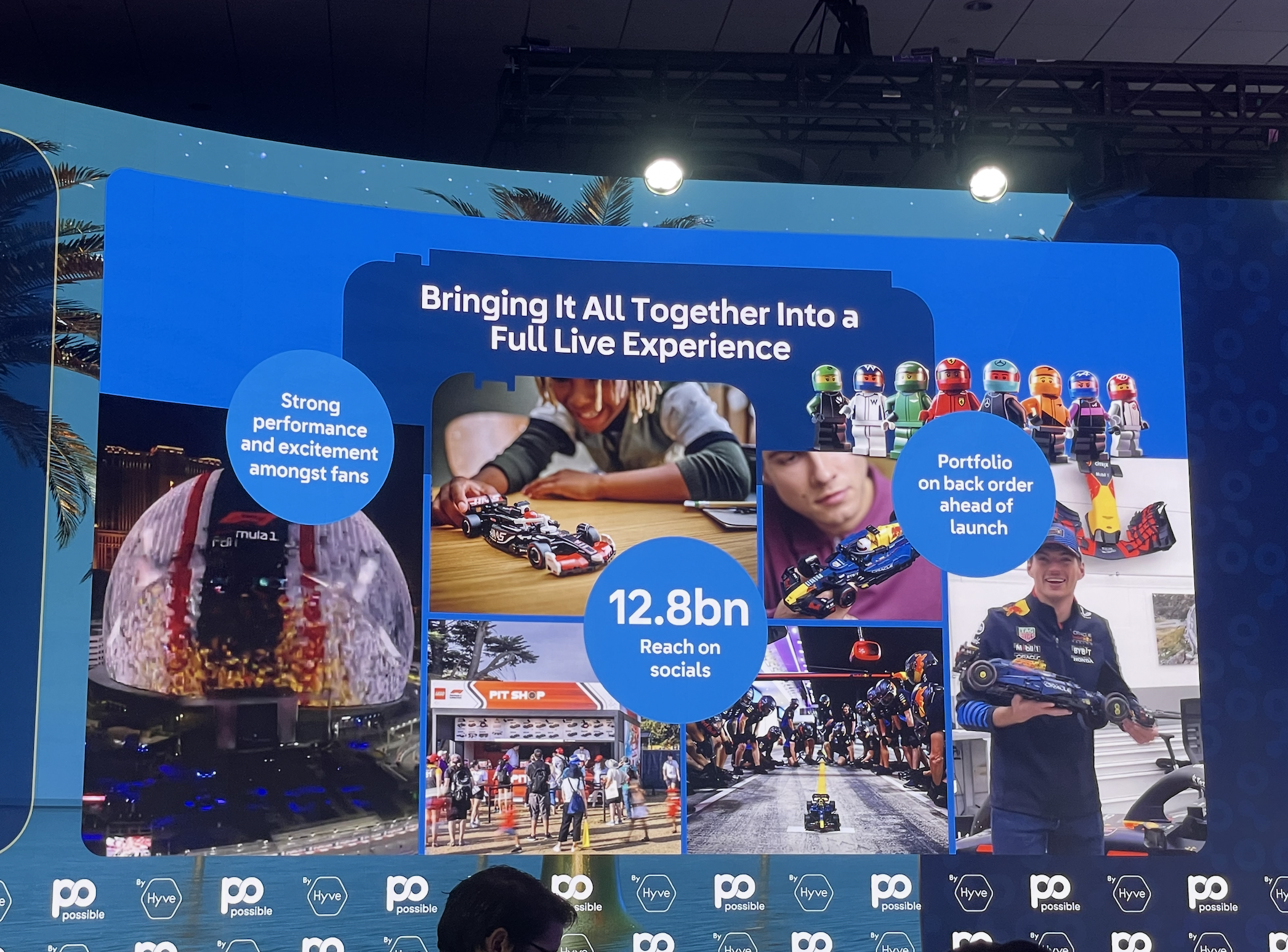In a market where attention is volatile and brand loyalty is earned moment by moment, Goldin argued that creativity, trust, and community are what actually drive brand equity — especially when brands commit to building what they own, and letting that fuel what they earn.
At POSSIBLE 2025, LEGO’s Chief Product and Marketing Officer, Julia Goldin, delivered a standout session that reframed how marketers think about long-term relevance. Rather than focusing on short-term tactics or platform trends, she made the case for a slower, more durable strategy: creativity as infrastructure, not decoration.
Creativity, Reframed as a Strategic Asset
Goldin opened with a simple provocation: we don’t need more content — we need more creativity. Not the polished, campaign-level kind, but a deeper, more systemic approach that treats imagination as a resource. She made the distinction between child and adult creativity — one instinctive, the other outcome-driven — and argued that both are essential.
LEGO’s goal, she said, is to stretch both. That’s why their product development starts with passion points (what people genuinely love) rather than demographics or formats. Their floral sets, art collections, and fandom tie-ins are designed as tools to unlock self-expression across ages — not categories.
One striking data point: during Valentine’s week, LEGO floral sets accounted for up to 6% of all global red rose sales. That’s not nostalgia — that’s creative product-market fit.
Inclusion That’s Baked Into the System of Play
LEGO doesn’t just reflect diversity in its advertising. It builds it directly into the product system. Whether it’s braille bricks for blind children, adaptive instructions for those with cognitive differences, or characters that reflect a wider range of identities, the approach is structural, not seasonal.
The focus is on enabling more people to see themselves in the act of creating — and to do so safely, especially for children online. Their digital platforms are built from the ground up with child safety and self-expression in mind. And on the adult side, LEGO Ideas has become a global co-creation engine — with over 10 million submissions and votes per year.
Brand Love Isn’t Bought — It’s Built Over Time
Rather than talk performance marketing, Goldin zeroed in on moments that generate lasting emotional equity — the kind that people talk about, queue for, or remember. In LEGO’s case, that means prioritising physical, tactile brand experiences as much as digital reach.
She pointed to a recent LEGO botanical activation in rainy London, where people lined up for hours just to build and keep a flower. “Sometimes the best marketing,” she said, “is giving people something they want to stand in the rain for.”
That thinking extends into partnerships. Their work with Pharrell Williams, Louis Vuitton, and Nigerian artist Ekene Ijeoma wasn’t built for mass reach — it was built for meaning. These weren’t brand campaigns; they were creative collaborations rooted in personal storytelling, cultural relevance, and trust.
Entertainment as an Extension of Purpose
LEGO’s world-building continues to stretch into entertainment — from LEGO Masters to digital series on YouTube. But Goldin was clear: the point isn’t just exposure. It’s resonance. Their strategy is to meet audiences on their own terms, in formats that reflect how people want to engage — not how the brand wants to speak.
The recent partnership with Formula 1 exemplifies this approach: product launches, immersive experiences, and a content rollout designed not around a single campaign window, but a layered, co-created journey across touchpoints.

Culture Starts Inside
Goldin ended by talking about creativity not as a brand value — but as an internal operating system. She shared three principles that guide how LEGO teams work:
- Love the purpose — employees who connect with the mission bring more energy and originality.
- Love the team — creative trust happens in small, collaborative units, not top-down org charts.
- Love the work — joy and experimentation aren’t just motivators; they’re multipliers.
Final Take
LEGO’s approach isn’t about chasing relevance. It’s about building systems that earn it — over time, with intention. Goldin’s message was clear: in a world obsessed with efficiency, the most undervalued asset might just be creativity people actually care about.
And the brands that embrace that — not just in marketing, but in product, culture, and community — will be the ones that stay remembered. Not just seen.


